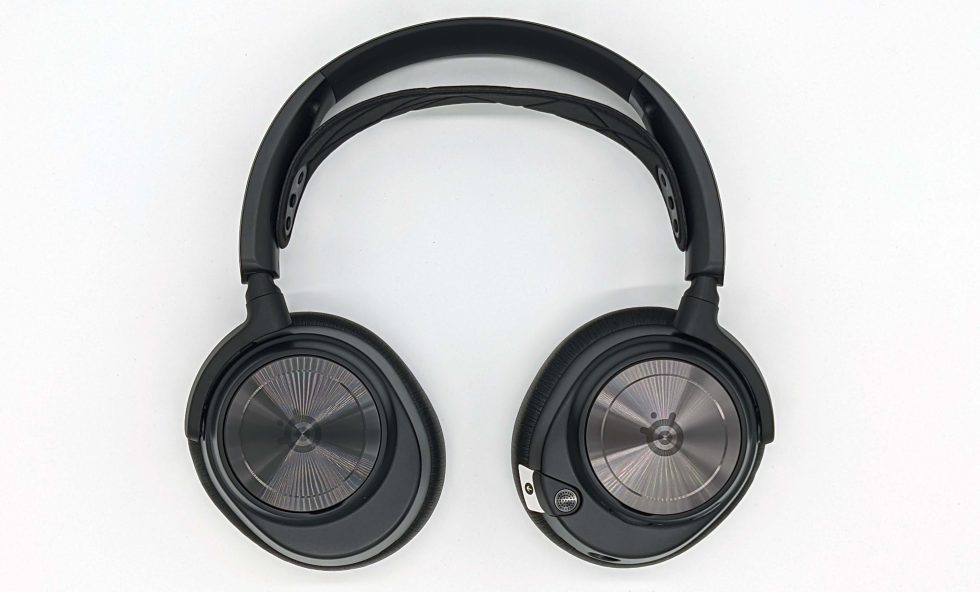After all the technical details, we finally come to the most important thing: How does it sound? So we start right where it sometimes hurts: with the individual hearing test. The headset was, as usual, “played in” for 72 hours straight. You never know…
Bass range
The headset doesn’t fail because of the subcontraoctave as such, but rather somewhat because of the delivered level, which doesn’t deliver such concise results without manual tweaking on an equalizer. The contraoctave, including the large bass drum, is present, but falls into a smaller hole at about 70 Hz at the top. Nothing hums or scrapes, not even in the slightest, but it remains free of ugly resonances. The bass is there, although it is anything but dominant. The level stability is quite acceptable, but the headset runs out of breath faster than you would like when manually boosting the bass below 64 Hz.
This range sounds refreshingly natural and is certainly one of the headset’s highlights. The male vocals are still pleasantly full and rich, though completely dry as dust, and the instruments are not distorted either. Since the level at the upper end then already rises more clearly, a fullness is created that may be intended, but also quickly leads to oversaturation.
Midrange
Here, the lower mids are slightly overemphasized. This certainly sounds full-bodied, but unfortunately also a bit pappy in the mass, where many details of the fundamental frequencies become blurred and indistinct. From about 250 Hz onwards, however, the further course remains almost linear, which can iron out some things, because this playing style is really good. Female vocals sound a bit too dominant in the foundation, but those who like fullness and warmth can certainly live with it quite well.
It remains almost linear up to 1 KHz, which is very conducive to differentiated reproduction. The stage and the subjectively perceived quality of the spatial resolution are on a high and appropriate level here. A large orchestra (from a purely subjective point of view) seems sufficiently wide in width, still well staggered in depth and also quite accurately positioned in total. This makes it easier to localize individual instruments quite well at different overall levels. Only from about 1.5 KHz a smaller hole opens up again.
However, the speech reproduction does not suffer any losses, no matter how many different sources were mixed. The suitability on the desktop is of course underlined by the very good spatial reproduction in games with excellent audio material, but you also still get along well with many music genres in the deep room with good recordings.
Tweeter range
The reproduction is not even bad in terms of quality and it relies on the largely well-modeled mids. The speech intelligibility as well as the quality of the vocals during recognition can also convince and the whole thing is not too dominant. However, a small valley of tears already starts at about 3 kHz and continues upwards. This is a pity, because certain quieter sources are harder to locate here.
At about 4 kHz there is a hole, which unfortunately can be heard and whose origin I already mentioned. This is unattractive in that it takes away the brilliance of some of the vocals. After that, however, it goes up steeply to 6 or 7 kHz, and an overshoot occurs, which is also known as the “Beyer Peak”. Sibilants and blow-off noises are too prominent and everything already slides somewhat into the metallic. If the fundamental tones are still too warm and full, icy treble air already forms here. This leads to some acoustic confusion, as it totally contradicts the slightly warmer basic tuning of the headset.
Summary and conclusion
So, where does the Arctis Nova Pro end up? As for the software and operation through the DAC, I can only report good things. A short tutorial on the small screen guides you through the functions and explains the operation, after a firmware update by the GG / Sonar software can also be turned on the computer itself to the adjusting screws. I also found it practical that the “chat mix” function can be activated at the touch of a button, for example, to quickly turn the voice chat louder than the game.
By the way, the volume control is only possible on the DAC or headset, in Windows itself the slider always immediately jumps back to 100%. The two controls on the earpiece and the DAC are not synchronized, which should be kept in mind if the sound is quiet but the volume is already at maximum. To achieve the 96 kHz / 24 bit specified by the manufacturer, you have to manually adjust the audio settings under Windows, unfortunately this is not possible automatically.
However, I clearly find that the feel is too much dominated by plastic for the called price. This is perfectly fine for a budget headset, but not for a self-proclaimed top model with a corresponding price tag. And there are also lights and shadows in the audio area, as already reported in detail. Overall, it does not perform badly in terms of reproduction, but it cannot justify its high price. If you pay for high-end, you can also expect high-end in the entire spectrum, i.e. not only in the bass-heavy “gamer zone”.



































22 Antworten
Kommentar
Lade neue Kommentare
Urgestein
1
Urgestein
Moderator
Urgestein
1
Urgestein
Urgestein
1
Urgestein
Urgestein
1
Veteran
Urgestein
Veteran
Veteran
Moderator
Veteran
Veteran
Alle Kommentare lesen unter igor´sLAB Community →